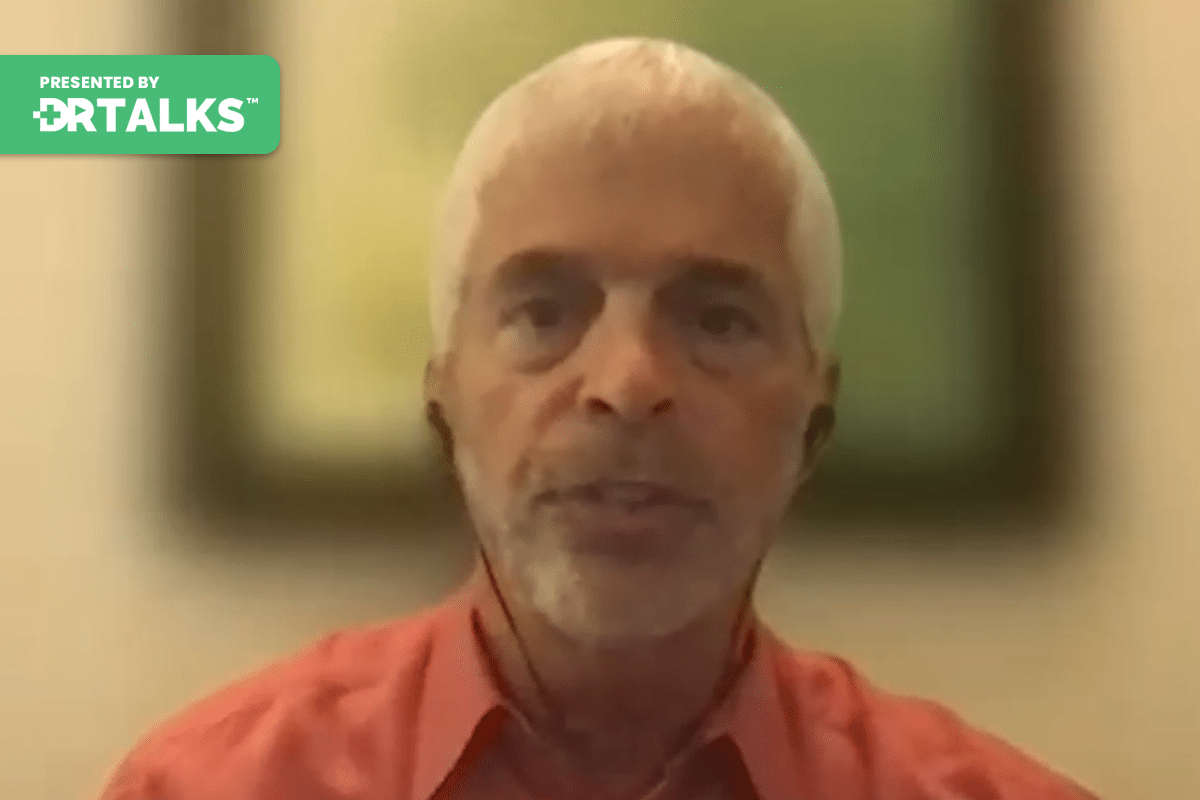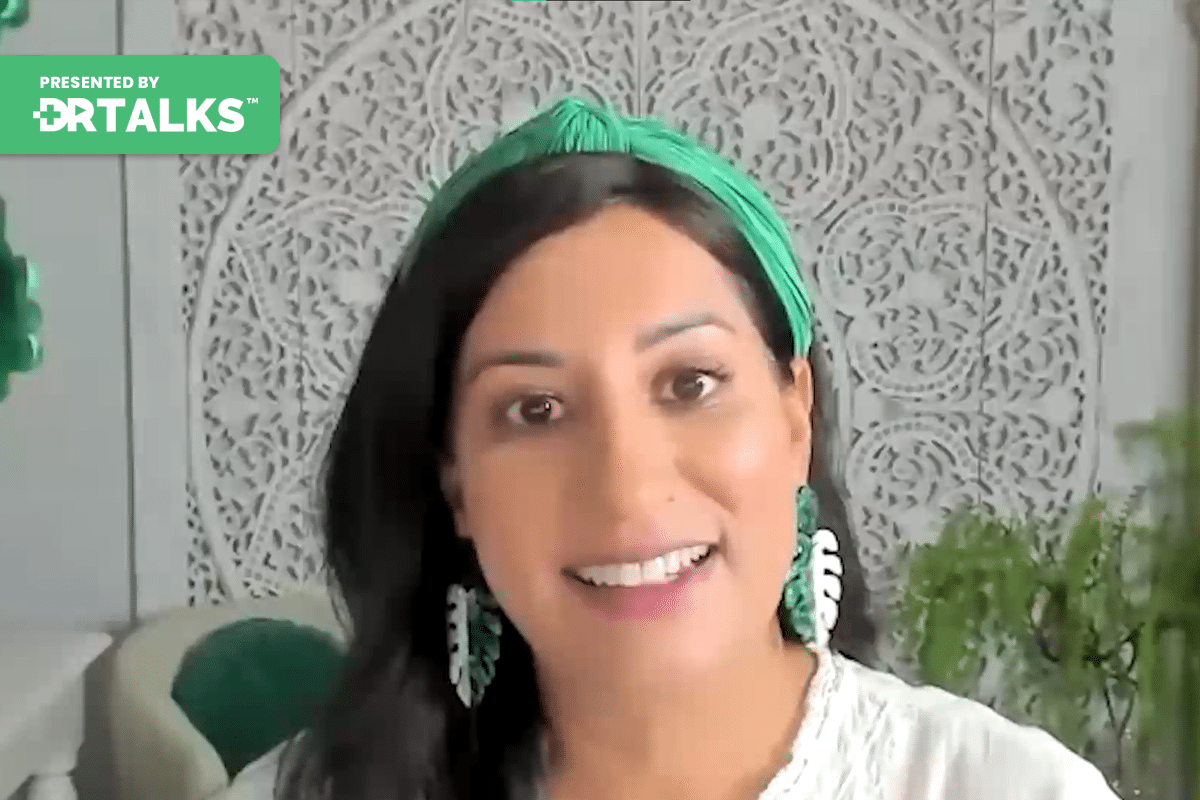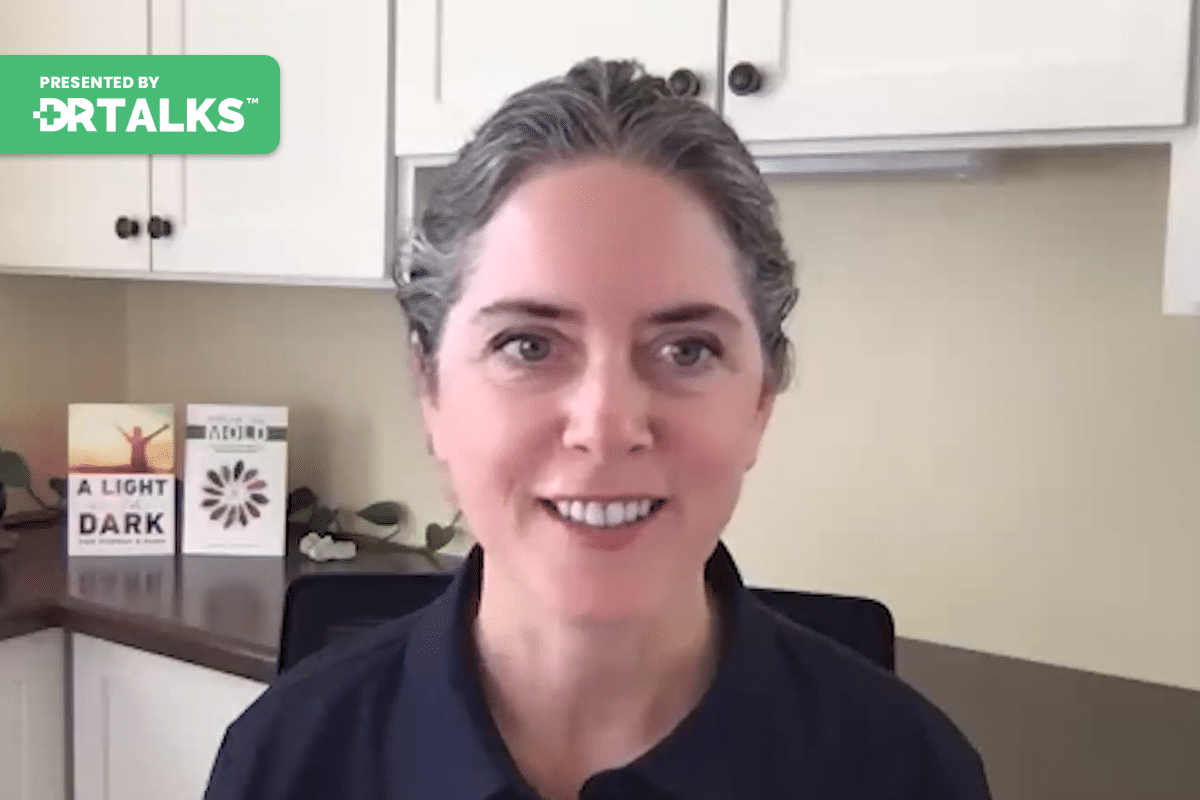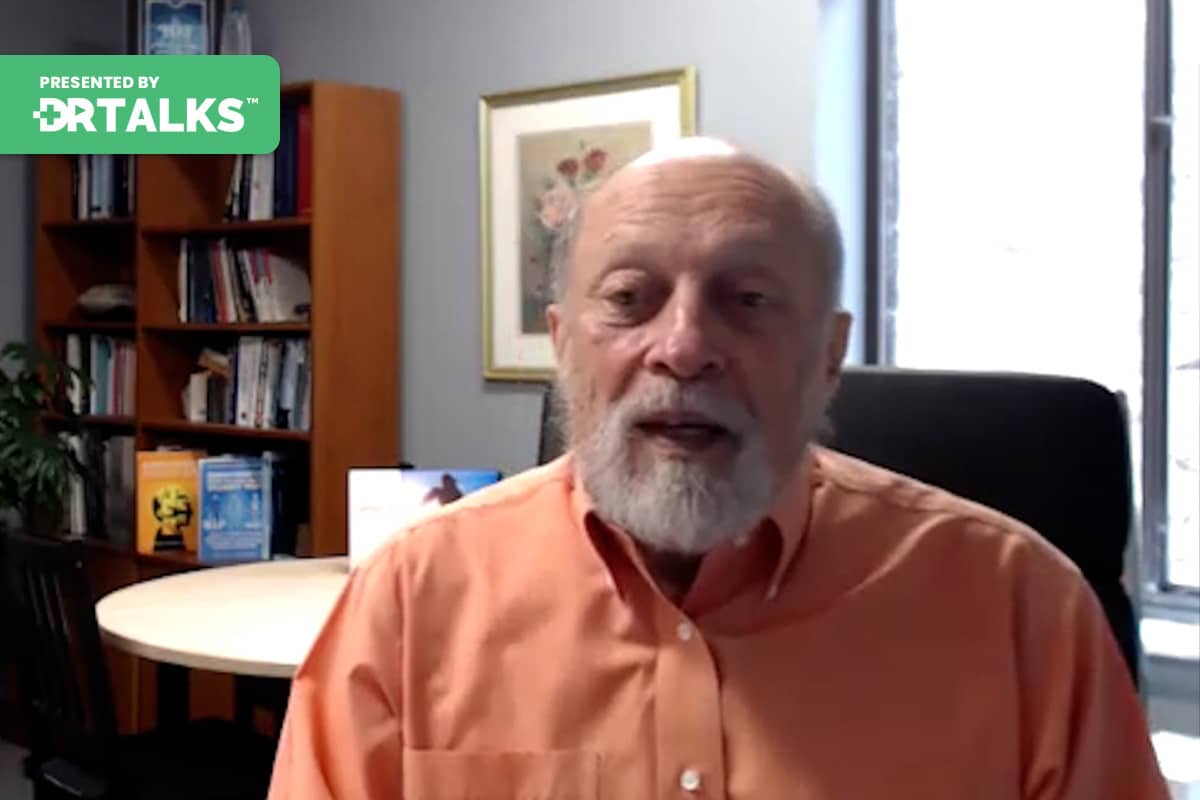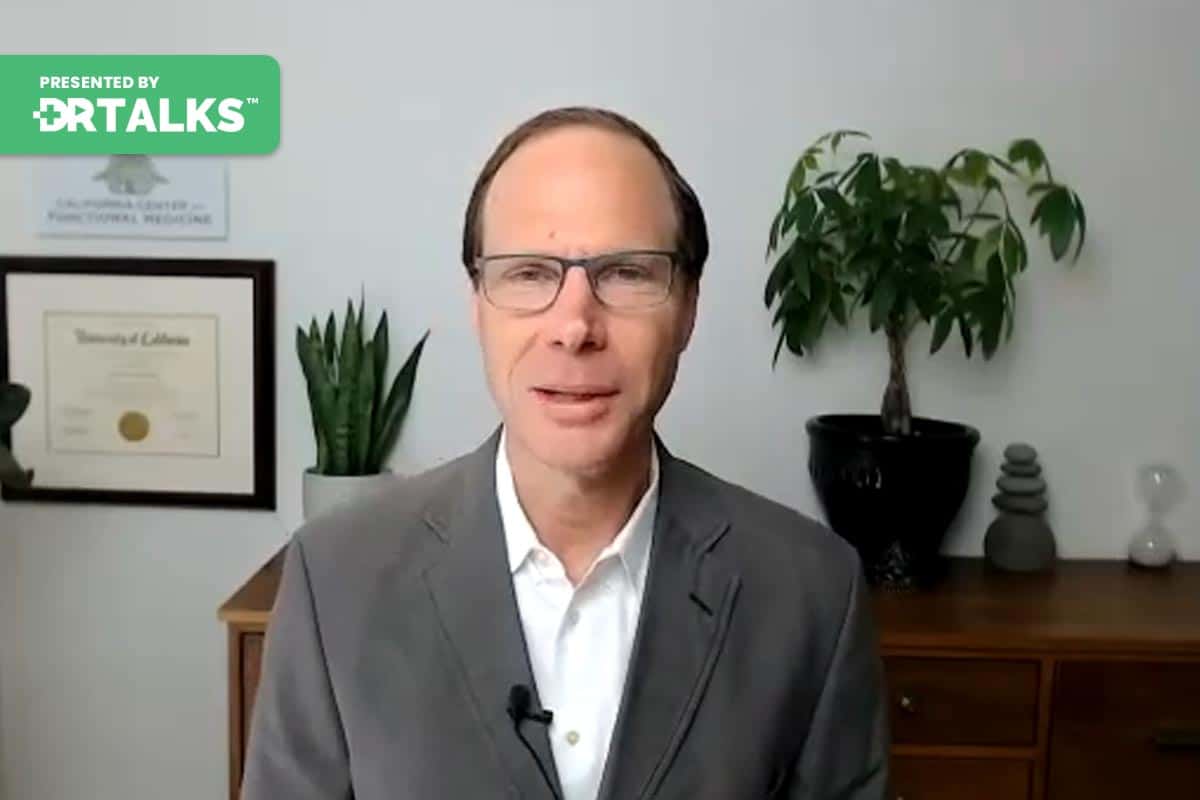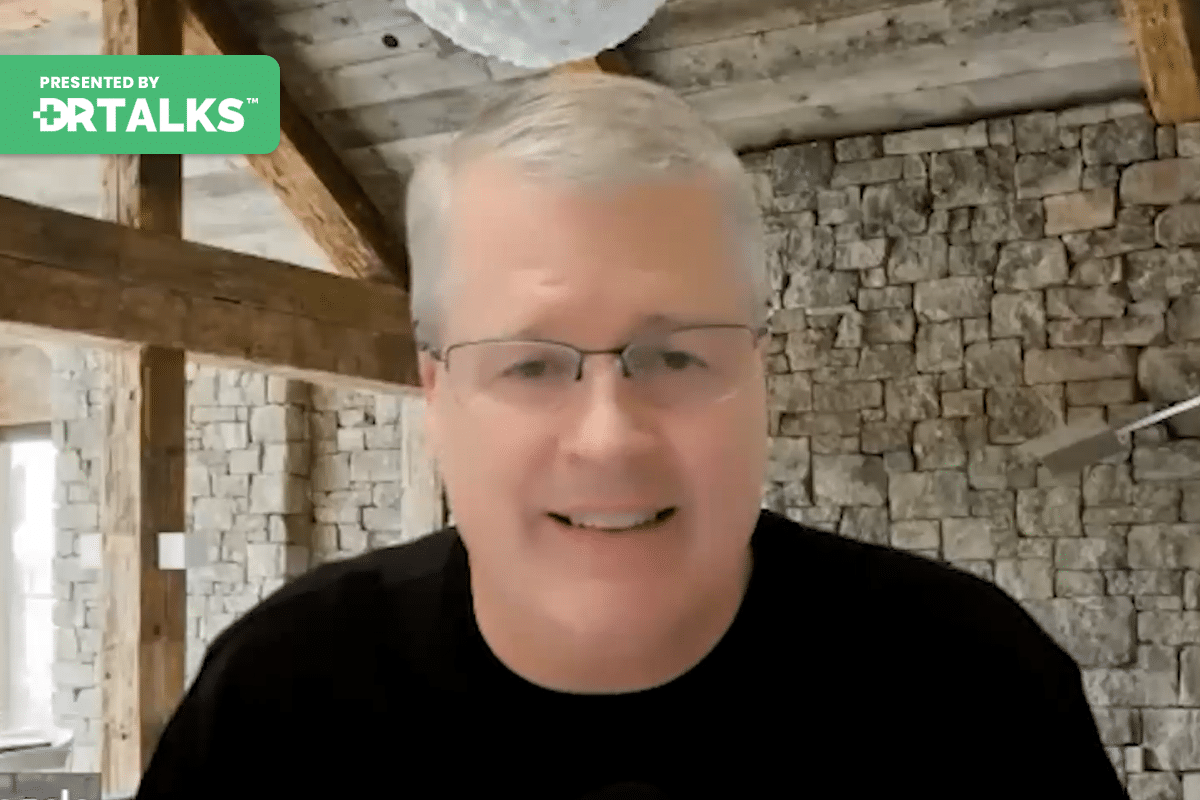Join the discussion below

Dr. Darin Ingels is a Licensed Naturopathic Doctor, Author, International Speaker, and leading authority on Lyme disease. He is a former Lyme patient who overcame his own 3-year battle with Lyme disease, after having failed conventional treatment and became progressively debilitated. Dr. Ingels found that proper diet, lifestyle management and... Read More

Tom O’Bryan, DC, CCN, DABCN, CIFM
Dr. O’Bryan is considered a ‘Sherlock Holmes’ for chronic disease and teaches that recognizing and addressing the underlying mechanisms that activate an immune response is the map to the highway toward better health. He holds teaching Faculty positions with the Institute for Functional Medicine and the National University of Health... Read More
- Overcoming Lyme disease takes more than just treating the infection
- But rather addressing other underlying causes of inflammation and autoimmunity
- Learn how to navigate the complex web of toxicity, leaky gut, dysbiosis, and other factors that undermine your immune system
Related Topics
Alzheimers, Antibodies, Autoimmune Disease, Autoimmunity, Biomarkers, Brain Cells, Brain Health, Chronic Illness, Donut, Gluten-free Diet, Immune System, Inflammation, Lyme, Mitochondria, Thyroid, ToleranceDarin Ingels, ND
Welcome back, everyone, to the Lyme summit. I’m being joined today by my friend and colleague, Dr. Tom O’Bryan, who is a world now renowned expert on autoimmune disease, gluten, everything, food sensitivity. And I think it’s so relevant to anyone dealing with Lyme or really any chronic illness. So, Tom, it’s such a pleasure to have you as part of the summit.
Tom O’Bryan, DC, CCN, DABCN, CIFM
Thank you so much. It’s really a pleasure to be with you today, especially for this really important topic.
Darin Ingels, ND
Yeah. So, you know, so many people living with Lyme disease, tick borne illness, really any kind of chronic infection. You know, it’s not uncommon that people are experiencing some element of autoimmunity. So it’s such a tough course to navigate because there’s so many potential triggers for autoimmune disease. And again, I know this is your wheelhouse. You spent so much time educating doctors and the public on autoimmunity. So let’s just kind of dove in and you know, what do you see as really being some of the big hurdles or maybe, maybe what are some of the big triggers of autoimmune disease?
Tom O’Bryan, DC, CCN, DABCN, CIFM
Yeah, loss of tolerance. It’s always loss of tolerance, meaning that at some point, you know, I’m going to date myself here with Popeye commercials, you know, and Popeye would say, I’ve stood as I stand as much as I can stand because I can’t stand no more. And then he squeezes that can of spinach that flies up in the air and he eats it. And here comes Popeye that when your immune system can’t stand the insult anymore, then it starts getting active to deal with the assault. Whatever the assault insult is, whatever it is, when you cross that line of tolerance, that’s when it begins. And, you know, I’m thrilled to be here today. I truly am, because some of the most frustrated and bordering on hopeless patients that I’ve seen over the years are chronic Lyme patients. They’ve tried everything. They’ve tried just everything. What’s going to fix this? What’s going to fix it? And for many, there’s a paradigm shift that has not occurred. And so I’d like to take a few minutes and just talk about this paradigm shift, please, that’s needed. I mean, it’s essential, isn’t just to keep your own frame and your own sense of rationality in the midst of this craziness, because you read and you hear, this is great. This is great. You tried that. It doesn’t work. So the term that I like to use when people aren’t getting the results that they’re looking for with the efforts they’re putting out, it’s like when you back your car out of the driveway and you say, What’s wrong with this car? You know, it’s moving, but it’s not moving very much. The emergency brake and you let go of the emergency brake and then you can back up completely easily when you’ve got line by definition, there’s an emergency brake holding back your immune system from dealing with the insult. There has to be emergency brakes and your immune system cannot deal with the insult.
The insult then accumulates, accumulates, accumulates, and it hits your energy. It goes into the mitochondria. You know, your your just are going down the spiral. So I’d like to just how do I say this dance in this concept for a few minutes, if we can? Because I think it’ll help people a lot. That’s why I was really excited to be here today. Is to talk about this because I think this is a critically important concept that most of our doctors don’t know about either that they don’t, they know it, but they just don’t focus on it. And that is when do you lose tolerance? When do you lose tolerance that first activates an immune response. And so it’s not that you lose tolerance when a tick bites you, you know, that’s not common at all. Usually your immune system will deal with it and it doesn’t have a chance to proliferate.
But for those people that the spiral starts a few weeks after, we’re after a tick bite, if they could identify the bite and they’re going down, it’s because the immune system was already so compromised it couldn’t deal with the problem or every person that gets a tick bite would have these symptoms after a bite, you know, everyone would. It’s just that there has to have been a compromised immune system that has been working so hard for so long and so many people say, well, I felt fine beforehand. Well, that doesn’t matter. It by the time you don’t feel fine anymore, this thing is way down. The road. And I’ll give you an example that doesn’t relate directly in terms of symptoms, but relates directly in terms of development, that in March of 2020, a report was put out by Health and Human Services.
And the status in our country with Alzheimer’s and the development of Alzheimer’s, because they’ve known for a number of years this is going to bankrupt us. This this one disease is going to bankrupt Medicare and Medicaid in 23, 25 years. I think the study was I don’t remember the exact number of years, but they said this is inevitable. You know, it’s we we just can’t deal with what’s going on. And they brought in experts from all over the world. They’ve put him in a room and said, you aren’t leaving until you help us figure out what to do. Because a number of pharmaceutical companies had already closed their Alzheimer’s research departments, laid off all the scientists. They’ve spent billions and they realized we’re never going to find a cure for this. Let’s allocate our resources to something that’s more profitable, because pharmaceutical companies are profit driven. We’d like to be grandiose and think that they’re health driven for the well-being of society, but we won’t go down that discussion right now. But they’re profit driven. So they just closed the departments. And when the second or third pharmaceutical company did that, that’s when Health and Human Services announced this strategy meeting. And they show their report says that you cross the line of tolerance very early, usually early in life, somewhere in the teens to the early twenties for most people. But you feel fine, you know, because you got to that teenage body, those teenage mitochondria that are just pounding it out. And the growth curve is on the upward trend until 25, 28. And then it’s all downhill for all of us. And the goal is not to fast downhill. That’s the goal. So you start to lose tolerance because of the lifestyles that we’ve lived and what we’ve thrown in our bodies already. Then when you lose tolerance, your immune system starts trying to protect you by going after whatever the insult is. So if it’s too much sugar, you get inflammation.
Every time you eat a donut, you get more inflammation. That’s the activated immune system. You know, if it’s too much air pollution, we know that every child that they test now in Mexico City, every child has the biomarkers of the mechanisms that cause Alzheimer’s. Every single child because air pollution is so bad there. Now, you know, when did that happen? Well, for them, it was at birth or before mom in utero. But the point is, when you cross that line of tolerance, your immune system starts trying to protect you from the bad foods, the processed foods, the chemicals in the food, whatever it should be. And you feel fine. You don’t feel any of that. And what this commission showed is that this goes on for 20 to 25 years of killing off brain cells, killing off brain cells, killing our brain cells. And there’s no symptoms. It’s non symptomatic. But this mechanism of inflammation, excess inflammation, is really good for you.
Without it we’d be dead. But excess inflammation by definition means you’re killing off more cells and you’re making but we have an entire new body every couple of years, you know, and so you make new art cells, you make new brain cells, you make new blood vessels, cells. Every cell in our body, we regenerate except the ovaries. You know, there’s a certain number of eggs and that’s it as far as I know. But everything else keeps regenerating. But when there’s so much inflammation, it slows down this regeneration process until you cross that line. The inflammation is killing off more cells than you can make. That’s called increased antibodies. That’s one of the mechanisms to measure is antibodies to your thyroid, antibodies to your brain, antibodies to the collagen on your joints. It doesn’t matter what tissue.
The concept is the same for all of it. When you have increased antibodies, it means it’s above the normal amount. And so you’re killing off more cells and you’re making, you know, every time a doctor does a blood test for thyroid, they look, you know, they include antibodies if they’re thorough and comprehensive. And there’s always a normal amount of antibodies to your thyroid. Why is it normal to have antibodies to your skin or to your brain or to your thyroid? Why is it normal? Well, this is patient. You have an entire new body every few years. And so your immune system’s got to get rid of the old and damaged cells to make room for new cells. And that’s antibodies. That’s part of that process. So there’s a normal reference range for thyroid antibodies. Depending on the lab. It’s usually 34 to 39 somewhere in depending on the lab. But when you’ve got elevated thyroid antibodies, you’re killing off more thyroid cells in your making and you don’t feel that you don’t. But you’ve lost tolerance. You’ve lost tolerance for whatever the mechanism is. Mechanism is that is killing off the thyroid cells. An article came out a few months ago that showed that 87% of Hashimoto’s thyroid patients, the autoimmune disease, 87% of them get better on a gluten free diet. And these are not celiac, just regular people. But on a gluten free diet, the thyroid antibodies start coming down because for those people, gluten is one of the gasoline on the fire causing the inflammation. But that mechanism is going up. And stay with me, I promise. This is really good information.
This mechanism is going on for years. And in this Alzheimer’s Advisory Council for Health and Human Services, they showed it’s going on for 20 to 25 years, killing off brain cells, killing of brain cells, killing of brain cells. Before you get into the category of having elevated antibodies to your thyroid or elevated values to your brain. And at that point, when they measure, of course, and they find it, what they see is that these people, because they check, because these people are having symptoms. So high. Jill my son just came in, so I’m hoping you can edit. Oh, my wife had to get a fresh diaper because he has a poopy diaper. Oh, okay. So the elevated antibodies to brain tissue because the inflammation has been going on for years, those elevated antibodies killing off brain cells, killing off brain cells, killing off brain cells for 20 to 25 years. Now you’ve got mild memory problems. Where did I park my car? In the parking lot.
What road is my car in? I just wasn’t paying attention. Where’s my car? Where’s the keys? Where do I put the keys? To the car. Where’s my phone? It’s all of those little things in life that we think we’re just too stressed about. Oh, I’m getting old. I don’t remember the way I used to. Well, how old are you? I’m 38. No, that’s not supposed to happen. That’s a brain that’s under great stress. Losing brain cells, losing brain cells, losing brain cells that this mechanism has been going on for 20 to 25 years. And eventually you start getting these symptoms. Then you have this mild cognitive impairment is the category that they entitled it that goes on for 5 to 7 years. Then you get diagnosed with mild Alzheimer’s or another dementia and that stays for 2 to 3 years and then it’s moderate and then it’s severe.
And until you get the diagnosis of mild Alzheimer’s, you think you’re fine, right? But all of this was going on under the surface, 20 to 25 years of mild chronic inflammation. This systemic meaning it’s in your bloodstream. So it’s going through the whole body. It’s systemic. This systemic inflammation is going on for years and years and years. And it is your lifestyle that causes this inflammation. It’s not an immune system that’s gone crazy. It’s an your immune system’s the armed forces in your body. It’s trying to protect you. We call it the Army, the Navy, the Air Force, the Marines, IGA, IgG cytokines. They’re all branches of the armed forces trying to protect you. And they’re silent in the background, trying to protect you until there’s so much damage from the mild, systemic, chronic inflammation over the years, there’s so much damage to your tissue. Now you start getting some symptoms and then you try to figure out, what do I take to get rid of these symptoms? Right. There’s nothing to take to get rid of lying. I’m sure you’ve already if you’re watching this summit, you’ve tried a bunch of things already. And there are some things, of course, that help reduce symptoms. Of course. Of course. But if you’re watching this summit, you’re wanting more information. And I’m telling you, you’ve got to go back in your history. Do I have mercury poisoning? Do I have lead toxicity? Do I have too much arsenic in my body because I gave up gluten ten years ago and I’ve been eating a lot of rice. Well, rice is high in arsenic and but I’ve never checked. So I don’t know if I’m high in arsenic or not. So your immune system has to be compromised. It has to have been working overtime for so long that it just doesn’t have the gusto to deal with what you’ve been exposed to now. And that’s a really important thing to understand.
Really, really important is finding the triggers of inflammation. I’d like to stay with this concept for a moment, if I can, and talk about what they’re teaching right now at Harvard Medical School. This is so important that there is referred to as the perfect storm in the development of chronic inflammatory diseases and likely people watching this summit on Lyme disease. They’ve had Lyme for a while. It’s chronic now, so there’s a perfect storm that occurs in the development of chronic inflammatory disease. It doesn’t matter which one it is. So when you understand this concept of the storm, you then have more background information to ask different questions to get an answer because you haven’t gotten the answers you need yet. You don’t have the results that you want yet. So the perfect storm, there’s five pillars in the development of chronic inflammatory disease versus your genetics.
And that is the deck of cards you were dealt. Can’t do anything about that in terms of get rid of your genes. You can’t do that. And some doctors say we’re going to turn off genes. You can’t turn off genes. You can dim down genes. So they’re not expressing themselves so much. So the language when a gene expresses itself, the body makes a protein that that gene gives direction. And what protein to make does it matter which that’s how they work. Is it the genes have the blueprint to make proteins, whether it’s your heart, the genes for your heart, the genes for your brain, the genes for your eyes, the color of your eyes. They’re all proteins that are made by the genes and or the gene. There’s 12 over 1200 genes of inflammation in the body. So what we want to do with the first pillar is dim down the genes of inflammation.
So everything you learn that lifestyle wise, that calms down inflammation does so by dimming down the genes which don’t talk so loud. Talking to your genes, you know, telling the genes, quiet down, quiet down. I mean, inflammation is good for you. We wouldn’t be here if we didn’t have inflammation, but excess inflammation is not good for you so that your genes is number one. Number two is environmental triggers in the five pillars. Now, what’s an environmental trigger? There’s two categories the environmental triggers out there in the world and the most common out there in the world, environmental triggers. What’s on the end of your fork because you bring it inside your world. So that’s one category. And then air pollution is another. And then the chemicals you put on your body is another. But then there’s also the environmental triggers already inside your body, which is the heavy metals like mercury and lead and chemicals that have accumulated inside your body already. So you have to look at what are the external, environmental triggers that are turning up my genes of inflammation right now? And what are the internal environmental triggers? You know, you put nail polish on your ten little fingers and ten little toes starting at five years old. By the time you’re 25, 30, the risk is that you’ve got a whole lot of phthalates in your body right now. Those are chemicals used to mold plastic. Those are the chemicals that make the nail polish. ARD And they’re in your bloodstream in 4 to 5 minutes in my nude amounts. Now, there’s no evidence that the amount of phthalates that get into your bloodstream from nail polish is toxic to humans. There’s no evidence of that because you haven’t crossed the threshold with the amount you’re exposed to.
But this stuff accumulates in your body. If your detox pathways are not working really well and it accumulates, now you get to the point of where it accumulates to the point of being activating the genes of inflammation. You cross the threshold of how much of this stuff your body can handle. I’ll give you an example of that. Chicago 2016 346 Pregnant women in the eighth month of pregnancy. They collected their urine and they looked at five different phthalates. The chemicals used to mold plastic in the urine and with the assumption, well, if it’s in mom’s urine, it was in mom’s blood. So it’s likely in baby who’s developing in utero. And then they followed the offspring of those pregnancies for seven years and they divided the results into the pregnant women with the lowest amount the next, the third and the highest amount. So four categories. And then they followed the offspring of those pregnancy.
You said when the kids turned seven years old, they did Wechsler IQ tests on them, the official IQ tests, and every child whose mother was in the highest category of phthalates and urine in pregnancy, meaning likely she had accumulated over a lifetime, and that she had just drank a glass of plastic. Right. That it probably accumulated for them, but every one of them in the highest category compared to the children whose mothers were the lowest category. Everyone in the highest category, their IQ was seven points lower, 6.7 to 7.4 points lower. Doesn’t mean anything to anybody until you say, well, wait a minute, a one point difference in IQ is noticeable, and a seven point difference is a difference between a child working really hard, getting straight A’s and a child working really hard, getting straight C’s this kids working as hard as they possibly can, but they don’t have a chance of hell in ever excelling because their mom was high in phthalates during pregnancy and baby’s brain develop in an environment with high phthalates. Then you just google phthalates and neurogenesis nerve growth.
Here come the studies at certain levels. These phthalates inhibit neurogenesis so baby’s brain doesn’t develop properly in utero. That’s an example of how this stuff accumulates over time. And Mom’s body was probably a little inflamed, but she felt fine as her immune system was trying to deal with these phthalates in her bloodstream over the first 20, 25 years of her life. So you get this. So those are the toxins, the environmental triggers inside the body that I’m referring to. So number one was genetics. Number two, environmental triggers both outside. Most common is what’s on the end of your fork. And inside you have to check both. You’ve got a checkup. There’s no way around it. When you’ve got a disease like Lyme disease and it’s not getting better. This is the only way out, as far as I know, is to figure out where the emergency brakes that are holding back my immune system. So you have to find the emergency brakes. How are you throwing gasoline on the fire and stop looking for the quick cure? You’re not going to find it. You’re just not going to find it. Nobody talks like this, Joan. I’m getting really upset in the world now. I mean, someone got my email and they sent me a letter yesterday or an email yesterday from Switzerland. My daughter is 15 years old and she has celiac disease. And I saw a YouTube interview of you and you talked about corn could be a trigger. Well, my doctor, my gastroenterologist said that’s nonsense. And the nutritionist said she never heard of it. And that’s all Katie Corn, because there’s no gluten in corn.
What do I do? And it’s just utter nonsense that gastroenterologists don’t know this and talk about molecular mimicry and all of that. I’m not going down that path right now, but I’m just getting upset that, you know what? So I’m not going to be nice anymore. It’s like, wake up, wake up to every doctor. This watching, this wake up. You’ve got to educate your patients and investigate. You’ve got two lines of thought that you have to do your very best to help them feel better right now to get their symptoms down. Absolutely. But then you also have to examine where is the emergency brake now, this drug or this nutritional protocol or this diet may release a little bit of the emergency brake and they feel better.
But if I don’t deal with this trigger, whatever it is, it’s going to come back and haunt them somewhere else. You’ve got to do both. So that’s number two. Environmental triggers are the fingers on the dimmer switch. Number one, that turn up or down the genes and you want to turn up the genes of anti inflammation and turn down the genes of inflammation. In example, we’ve known this for many, many years. You eat one cup of blueberries a day for three years, and your brain’s thinking is well, as it was 13 years earlier, one cup of blueberries a day. Just read the science. It’s because blueberries have these polyphenols in them called sterols. Sterols still beans that turn up the genes of anti inflammation. They put the fire out. They’ve got a big garden hose that puts the fire out. That’s what blueberries do.
So anyway, that’s number two. Number three of the five pillars in the perfect storm developing chronic inflammatory disease. Number three is when you’ve been throwing to invite too many environmental triggers that are inflammatory down there, you kill off the good guys and you get too many bad guys in your gut. That’s called this biases. It means a bad gut creating inflammation. It’s all it means you got inflammation in your gut. Well, I feel my gut feels fine. Doesn’t matter how your gut feels, there’s no nerves down there to feel pain. When you’ve got gut pain, it’s a whole compensatory mechanism that’s going on. Your nerves to feel pain are on the outside of your body because that’s how we, our ancestors, would get assaulted. You know, when you feel pain on the inside, it’s pretty far down the road of whatever it is you’re dealing with. So number three is too many bad guys, not enough good guys in the gut. And if there’s only one thing you’re going to do to get healthier, only one thing you focus on building a healthy, diverse microbiome that’s most important, more important than anything else. Of course, you want to stop, throw gasoline on the fire, but the one thing you do if you get a healthy, diverse microbiome, you probably will handle sugar a little bit better than other people. You probably will handle gluten a little bit better than other people. Maybe, maybe. But this is the primary. So when you’ve got number three, just biopsies, the inflammation in the gut, that creates number four, the leaky gut. And when you have the leaky gut, now these big molecules get through into the bloodstream, because when you eat food, it’s not really in the body yet. It’s in the tube that your GI tract is a tube. It goes from the mouth to the other end like a big donut. If you were to stretch a donut out, that’s your GI tract from the mouth to the other end.
And you look down that tube, you look down the donut, you swallow food. It’s not in the bloodstream. How does it get in the bloodstream? Well, it’s got to be chopped up into little pieces. That’s called digestion. Think of a pearl necklace and you have to digest that food into each pearl of the pearl necklace. And the pearls can go right through the cheesecloth that lines the inside of the gut. Cheesecloth only lets the little molecules get through. So that’s got to be digested, digested. It bounces up against the wall of the gut, but it can’t get into the bloodstream because it’s too big. So it’s got to go further down. Being digested, digested. Digest why it’s 25 feet long and digest that and then eventually get so small it goes right through. But when you’ve got a leaky gut hairs in the cheesecloth, now these bigger molecules get through before they’re supposed to get through.
That’s the leaky gut. Now, these macromolecules of chicken or raspberry or timber, it doesn’t matter what it is they get through into the bloodstream and your bloodstream is just a highway. You know, there’s lots of traffic on the highway, but it’s all go in the same direction. It’s just a highway. And now on the highway, you’ve got these big molecules that aren’t supposed to be there and your brain says, What’s that? That’s not raw material. To make a new brain cell or a new bone cell, I better fight that immune system. Get rid of that. Okay, now your immune system makes antibodies to chicken and antibodies to tomatoes and antibodies to broccoli. It doesn’t matter what it is. If it was a macro molecule that got through your immune system, trying to protect you creates chronic, systemic inflammation so that you to get rid of this stuff. But you keep eating this stuff or you keep having the bad gut and with the tears in the cheesecloth. So more macromolecules get through every day and you get more inflammation and more inflammation. And eventually the bank account of your immune system is running dry. Now you get bit by a tick and your body can’t handle it so well.
How do I deal with the Lyme disease? You don’t deal with Lyme disease. You deal with the body that’s got Lyme disease. I mean, it’s a big paradigm shift, but when you start thinking differently, then you start asking different questions. And when you ask different questions now you get more rational answers. Where are the emergency brakes that are preventing my immune system from dealing with this thing? That’s what you have to find out. I’ll stop and take a breath.
Darin Ingels, ND
Well, I think you just unpacked a boatload of information, but I’m so glad you did. I mean, I think this is what I’ve been preaching to my patients for years. You know, the focus so much gets target on the bug. But again, you know, this isn’t like many other infections, you know, opportunistic. Again, I’m sure if I tested everybody in New England, the central part of the Midwest on Lyme disease, I would probably find 70 plus percent of people are going to have antibodies against Lyme. And one of these co-infections, they don’t all have Lyme disease. We saw this with COVID. You know, a lot of people got COVID. Some people got a sniffle, some people died. If we agree that the bug is relatively the same, why are we getting such profound differences in how people react to the organism? And just like you laid out, it’s all this other background inflammation that’s setting the stage that when you get that tick by, when you get that infection, that’s just the straw that breaks the camel’s back in many cases.
And, you know, I’ve seen this in my practice as well, people who really didn’t feel like they were hypersensitive to their world. And then after they get Lyme or one of these tick borne illnesses, now everything is so much worse. But like you said, it didn’t just start with the tick bite. There was all this stuff going on maybe from early childhood that just builds and builds and builds. And at some point, you know, you’ve crossed that threshold where your body’s just like, you know, that’s enough. That’s all I can handle. And, you know, we talk about the concept of a barrel in environmental medicine, right? You know, we’re all born with the barrel and some people have a huge barrel and some people have a shot glass.
When it overflows, you become symptomatic. And I just it’s so important. I’m just so glad that you talked about all of this because, again, if you’re only focusing on kill, kill, kill, you’re missing so many important features that are going to get you well, when you start taking stock of inflammation, toxicity, gut bugs, digestion, gut health, leaky gut, all these things are so critically important. And I think it’s also important, as Dan, like I said, you know, this is not a quick fix. I mean, look, I’ve been doing this for 24 years. I’ve tried over 8000 Lyme patients. I have had one patient, literally one patient. And all of these people that came in had very serious symptoms, a lot of neurological symptoms, neuro, Lyme. And in my mind I’m thinking, wow, this is going to be a very long road for this woman. She’s in her early thirties.
And, you know, I had her diet changes, gut changes. We did some herbs. She came back a month later, cured. I mean, got all the symptoms gone. I followed her for over seven years. She never once had a relapse, but one and done. And that’s great. And we love when that happens. But that is the exception more than the rule, I think, because for so many people you’ve had all these things in your life that led up to your tech bite that, you know, we’re getting if we don’t deal with all that background stuff as well, you know, we’re going to keep hitting that wall and you’re like, gosh, you know, I’m taking the herbs and taking the antibiotics. And, you know, we see a lot of up and down in Lyme anyway. But for the people who really do well, again, it’s all these other things that you just talked about.
Tom O’Bryan, DC, CCN, DABCN, CIFM
Critically, critically important. And before we sum it up here, I know how I went on for quite a while. I wanted to share that. There is one protocol that I’ve seen and only one that’s a not just lifestyle thing. Like, of course you have to drink enough water, so you hydrate. So you have good bowel movements. Of course you have to have good ones. I mean, those kinds of things are basic. Every doctor focuses on that. There’s one protocol I’ve seen that makes dramatic differences in the quality of a life who’s dealing with a chronic inflammatory disease. And I just dropped my jaw again and again and again. It’s dropped my jaw. And for people with Lyme disease, you have to start really, really gentle and very, very easy. And it may be months before you can do what another person can do in their third or fourth time of this.
It may be months before you can, but it really works. I’ve seen it work on so many different conditions and that is cold water immersion. The guy who has made a life out of this and has helped tens of thousands of people. His name is Wim Wmho, well, I’m not advocating his packages and his by his and none of that stuff, but the cold water immersion where you, you sit quietly and you center yourself first, you meditate for a few minutes, then you do a little breathing exercise to get your body integrated together. And you’re in a quiet environment. And then you go into the cold water tank, and some people will do it for 15 seconds. Some people will do it for 8 minutes. I mean, it doesn’t matter.
There is no goal that you have to get to. But when you do this type of protocol over the months, what happens is over months, every cell in your body gets stronger, your vascular treaty improves, you’re no longer cold. You know, your thyroid functioning better, your brain functions better, your muscles are stronger, your joints are more lubricated, your lymphatic system is flushing and detoxing better. Your liver’s working better. I mean, just every tissue of the body seems to get enhanced and function better over time. Takes months to really get into it. I started doing it about, oh, I guess it was about nine months ago and I was doing it two or times a week. I just took off. You know, there’s all kinds of things you can do. I didn’t want to buy Wim Hof Tank for $7,000 and not my world.
So I bought a chest freezer and I had a guy that makes sailboats just lined the inside of it, cork it so that it doesn’t leak with a nontoxic substance. And I use a chest freezer, you know, just turn it on. It makes the water nice and cold. There’s a way to set it up. It’s all on YouTube and all of that. How to do it. But I started off with one minute and one minute was really hard at first. Oh, just breathe. Just breathe breathe, just breathe. And I got up to 5 minutes, three times a week, and then I set it up with an ozone machine to be putting ozone in the water to detox. You don’t kill anything. So clean water all the time. And then the ozone machine broke and it took me months to get the ozone machine fixed. To get the part. The part had to come from China. So I didn’t do it anymore. And now I’ve just started again and I’m back to 30 seconds. You know, I’m just whoa, whoa. My body said, nope, that’s enough. I don’t have to be macho here. You know, I don’t have to grit my teeth and bear it. No, that’s not what this is about. This is about as long as you’re breathing, you’re staying in a parasympathetic dominant state. That’s good. And when you lose that time to get out, time to get out. But it’s a treatment protocol that is once you’re set up, there’s no charge, you know, and it works. It works for years. So and that came in I’ll share this as the last thing. My first mentor way back in 1978, Dr. George Goodhart, the founder of Applied Kinesiology. He would talk about hot, cold, hot.
And we were talking a lot about adrenal glands back then and that the adrenal glands get worn out. And something that Dr. Goodhart said that was from Hunslet Professor Celia, who coined the word stress and health back in the 1950s. And so you showed us that a young man who dies, unfortunately, of trauma, healthy man, his adrenal glands are the size of a walnut. They sit on top of the kidneys. But a young man of the same age who unfortunately dies of a degenerative disease, his adrenal glands are the size of a peanut that he had crossed the line of tolerance years ago, had chronic, systemic inflammation, making those dreams work harder, making them work harder, making them work harder.
And he got a disease. You don’t get a degenerative disease unless you’re in a state of sluggish adrenals. It doesn’t happen. But and so every person that has a degenerative disease, as far as I know, on autopsy, their adrenal glands are shriveled as far as I know. So Dr. Goodhart talked about that and he said, how do you rebuild adrenal glands? And we were all silent, you know, just looking up and waiting for the pearls of wisdom. And he said, one cell at a time, that’s the only way you rebuild the thyroid or you rebuild your brain, or you have to create the environment inside. That’s for a healthier, stronger or you. And you only can do that when you reduce the amount of chronic, systemic inflammation that’s inside of you, then you can build a stronger, healthier you. So Dr. George would talk about hot, cold, hot, have the you’re in the shower, turn it on as warm as you can and just have that water beat down on the on your mid back area right above the kidneys. They’re nice and warm.
Oh, that feels great. And then reach around behind and take a deep breath and try to stay calm and turn it all the way to cold for 5 seconds. Breathe, breathe. Three, four or five and turn it back to hot again. Right. So that hot, cold, hot. And you find that first time, it’s kind of weird to do it. But after that I said, Wow, that’s kind of refreshing. That feels pretty good because Hot opens up the blood vessels, more blood comes into the area, cold shuts it down, it opens it up again. So you’re pumping blood and you’re pumping lymphatics into that area to flush out more of the garbage that’s in there and bring more nutrients in there. So that was my first introduction to cold therapy back in 1978. I’ve done cold hot my whole life, you know, but now the cold water immersion is really a beautiful tool to use. And for people with Lyme whose bodies are so depleted, you have to start really small, really sore, and maybe your water is going to be at 62 degrees. It doesn’t matter where you start. You know, the goal is to get between 38 and 42 and just breathe in there for as long as you can. Stay calm and then you get out, you know, but you may start at 65 degrees, you know, whatever cold, hot, whatever works for you. You start where you are, maintain eating and oversight of staying calm, not tightening up in the midst of it. And then you say, okay, that’s enough, and be kind to yourself. So that’s the one therapeutic protocol I wanted to recommend in this summer because I know there are so many experts are talking about so many great things don’t want to take away from any of that. But this big concept of how do I reduce the inflammation in my body is critically important, and then how to rebuild a healthier you, right?
Darin Ingels, ND
Well, this is why I always like talking to you, Tom. You’ve always got great sources of information, great ideas. And again, I like things that are relatively easy to do, inexpensive, yet they have such a profound effect on our health. You know, in naturopathic medicine, we talk about hydrotherapy again. Ah, I think, you know, the chiropractic, naturopathic, our forefathers all came from the same school of thought, right? Recognizing that the body responds to, you know, this hot, cold therapy. So it’s a great tip. I know that people are going to want to connect with you. What’s the best way for people to follow you and get connected with your community?
Tom O’Bryan, DC, CCN, DABCN, CIFM
Oh, thank you. Thank you. Our website is thedr.com. Thedr.com, don’t spell the word doctor out thedr.com and we’ve got videos and even ads and handouts and it’s all there for you.
Darin Ingels, ND
Great. Well, again, I really appreciate you joining us and being part of the summit. And I know everyone always appreciates hearing your pearls of wisdom. So thank you for again for being part of the summit.
Tom O’Bryan, DC, CCN, DABCN, CIFM
Thank you, Dr. Ingels. A real pleasure.
Downloads

